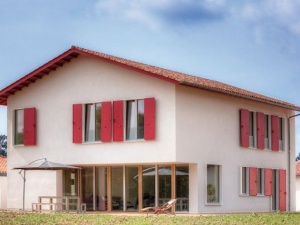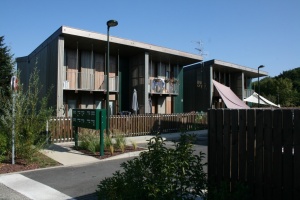Passive House in Warm climates
PASSIVE HOUSE STANDARD IN WARM CLIMATES ZONES AND LOCAL CONDITIONS
Which PH strategy for warm oceanic climates?
In the building sector, the steps needed to define the objectives of Passive House in terms of comfort, energy savings and costs can be applied indistinctly for continental and warm climates. However, they can be slightly adapted depending on the context of application.
The main steps are the following:
1. Defining the main objectives:
In a specific warm climate context, it is reasonable to ask some questions:
- Does the heating and cooling thresholds related to the Passive House certification criteria still make sense in the considered climate zone?
- Would it be coherent to target more performance on heating?
- Is it even possible to reach a zero heating demand?
In warm climates, reaching a 15 kWh/(m².a) can be met more easily than in cold ones. It is then possible to reduce heating needs even though various design parameters are not optimal (shapes, orientations, window sizes, performance of components, etc.). However, it may be interesting to aim at "zero energy heating" targets to achieve the cost optimum. It can then heat the air directly through the air supply. This challenge could then make it possible to reach low heating demand values around 7 kWh/(m².a) in the case of Mediterranean climates and lower than 12 kWh/(m²a) for oceanic climates.
2.Implementing rules from the early stage
The same basic rules apply both for cold and warm climates. In the case of more propitious conditions for heating demand, the Passive House certification can usually be reached, even if the design is not completely optimized (for insulation for example ). Anyway, it is essential to take into account the Passive House principles as early as possible in order to obtain easy to apply and reasonably cheap solutions. Bioclimatic parameters are to be considered as well for warm climates as for colder climates : they are key issues for the effective design of the envelope of the building (orientation, compactness).
3.Airtightness as a challenge
To respect the Passive House Principles, airtightness is an especially challenging issue for warm climates, as airtight construction is sometimes not a common practice in the concerned regions. However, airtight construction is also necessary there, even in the most favorable climates. Special attention should be dedicated to the detailing at design stage and to site supervision. The architect should provide the specification and location of the airtightness layer in all floor plans, sections and detailed drawings. Infrared thermography can help qualitatively to detect leakages: this can be a way to avoid the necessity of multiple airtightness tests.
4.Component quality
When local component are available, it is important to ensure their level of performance. Certification of Passive House suitable components allows a high level of transparency. If the performance values of the products are unclear, the PHPP can indicate the target values and help to ask the right questions to the manufacturers. One difficulty remains and concerns the lack of low-energy cooling solutions, both coherent with the Passive House principles and able to meet the higher cooling demand for buildings in warmer climates. Of course the cooling demand to satisfy should be as low as possible due to an optimized design of the envelope and the valorization of environmental conditions and passive cooling solutions; however, an important need for active cooling may remain in warm climate regions, especially for non-residential buildings.

